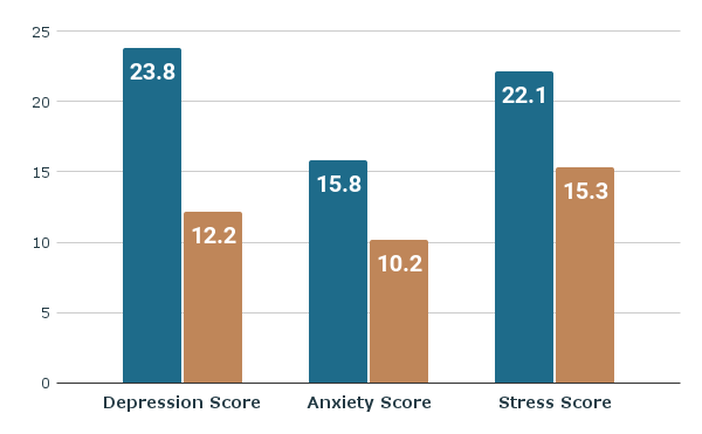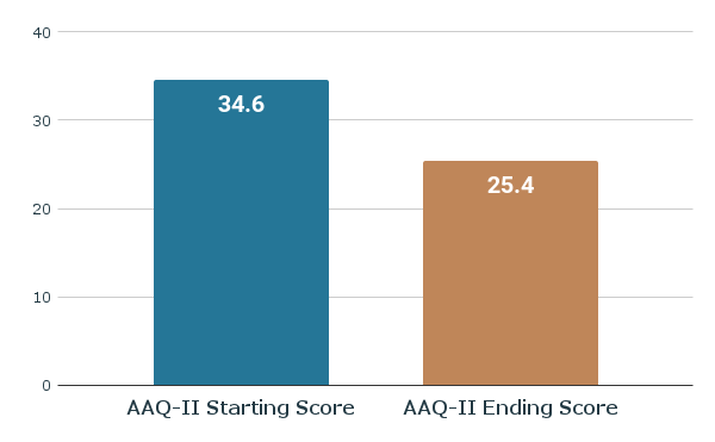Client Treatment Outcomes at BATRCS
Data from 33 clients who completed treatment at BATRCS.
The graph above shows patient data for those who used the Depression Anxiety and Stress Scale 23 to track progress, also known as the DASS-23. Please note the clients included are those who completed these assessments at the start and end of their treatment at BATRCS.
Depression Scores. Psychological assessment taken at the start of treatment indicated that clients reported, on average, severe levels of depression. Following treatment, clients reported, on average, mild levels of depression. These data indicate positive change, with clients reporting significantly less depression.
Anxiety. Psychological assessment taken at the start of treatment indicated that clients reported, on average, severe levels of anxiety. Following treatment, clients reported, on average, moderate levels of anxiety. These data indicate positive change, with clients reporting significantly less anxiety.
Stress. Psychological assessment taken at the start of treatment indicated that clients reported, on average, moderate levels of stress. Following treatment, clients reported, on average, mild levels of stress. These data indicate positive change, with clients reporting significantly less stress.
Depression Scores. Psychological assessment taken at the start of treatment indicated that clients reported, on average, severe levels of depression. Following treatment, clients reported, on average, mild levels of depression. These data indicate positive change, with clients reporting significantly less depression.
Anxiety. Psychological assessment taken at the start of treatment indicated that clients reported, on average, severe levels of anxiety. Following treatment, clients reported, on average, moderate levels of anxiety. These data indicate positive change, with clients reporting significantly less anxiety.
Stress. Psychological assessment taken at the start of treatment indicated that clients reported, on average, moderate levels of stress. Following treatment, clients reported, on average, mild levels of stress. These data indicate positive change, with clients reporting significantly less stress.
The graph above shows client data for those who used the Post-Traumatic Stress Disorder Checklist for the DSM-5, also known as the PCL-5. The PCL-5 assesses the presence and severity of PTSD symptoms. A total score of 33 or higher suggests that a person may have PTSD.
The average client started with a score of 44.5 (suggests the client may benefit from PTSD treatment) and ended with a score of 29.3 (indicates the client either has subthreshold symptoms of PTSD or does not meet criteria for PTSD).
The average client started with a score of 44.5 (suggests the client may benefit from PTSD treatment) and ended with a score of 29.3 (indicates the client either has subthreshold symptoms of PTSD or does not meet criteria for PTSD).
The graph above shows client data for those who used the Acceptance and Action Questionnaire, also known as the AAQ-II. Higher total scores mean less psychological flexibility, while lower total scores mean more psychological flexibility. Scores of > 24-28 suggest probable current clinical distress and make future distress and work absence more likely.




